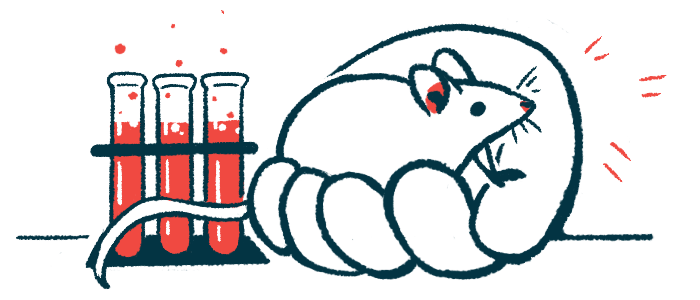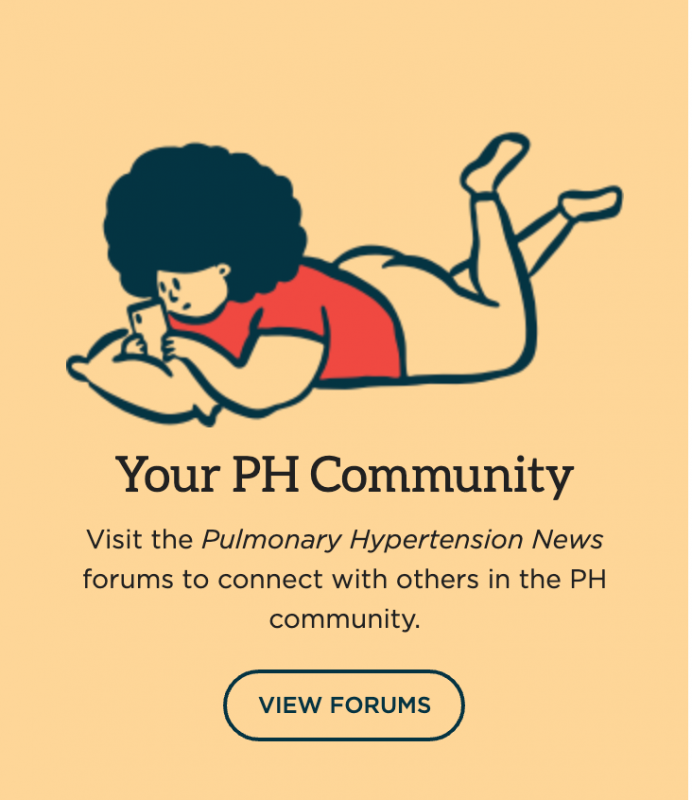Increasing irisin levels may reverse vascular remodeling in PAH: Study
It could also help slow disease progression by stopping abnormal cell growth

Boosting the levels of irisin, a protein found at lower levels in people with pulmonary arterial hypertension (PAH), may help slow disease progression by stopping abnormal cell growth and blood vessel remodeling in the lungs, a study has found.
“[I]risin is a novel protective factor against PAH development and is associated with disease severity and prognosis,” researchers wrote.
The study, “Irisin Attenuates Pulmonary Vascular Remodeling in Pulmonary Arterial Hypertension via Ubiquitin-Mediated Regulation of ENO1,” was conducted by researchers in China and published in Advanced Science.
Patients with higher irisin levels had greater exercise capacity
A rare form of pulmonary hypertension, PAH is caused by the narrowing of the pulmonary arteries, the blood vessels that carry blood to the lungs. This is driven by the excessive growth, or proliferation, of cells that line blood vessels, particularly pulmonary arteries’ smooth muscle cells (PASMCs). This restricts blood flow through the lungs, increasing blood pressure and making it harder for the heart to pump blood through the lungs.
Researchers had previously shown that people with PAH who had low levels of irisin, a protein mainly produced by skeletal and heart muscles, in their blood tended to have worse health outcomes.
In this study, the researchers compared the levels of irisin in 93 adults with PAH with those from 50 age- and sex-matched controls.
Irisin levels were significantly reduced in the blood and pulmonary arteries of people with PAH, compared to the control group, and the levels were even lower in high-risk patients.
Lower irisin levels were associated with higher blood pressure in the pulmonary arteries and right heart ventricle, higher pulmonary vascular resistance to blood flow, worse heart function on the World Health Organization scale, and elevated blood levels of NT-proBNP, a marker of heart damage.
In contrast, individuals with higher irisin levels had a higher cardiac index, meaning their hearts pumped more blood each minute, and performed better on the six-minute walk test, indicating greater exercise capacity.
‘Overexpression of irisin in mouse PAH models suppresses pulmonary vascular remodeling’
To better understand irisin’s role in PAH, scientists studied two mouse models of the disease: one exposed to low oxygen (hypoxia) and another called the SuHx model. In both models, irisin levels in the lungs were much lower than in healthy mice —about 49% to 68% lower, depending on the testing method. The researchers also found that irisin was mainly found in the smooth muscle cells of the lung’s blood vessels.
Mice with PAH had increased thickness of the lung blood vessels, as well as right ventricle enlargement and high blood pressure during heart contraction. Increasing irisin levels, either by treating mice with an adeno-associated viral vector or a lab-made form of irisin, reversed the signs of PAH.
“Overexpression of irisin in mouse PAH models suppresses pulmonary vascular remodeling, and alleviates hemodynamic parameters and right ventricular failure, indicating a protective role of irisin in PAH,” the researchers wrote.
Further experiments using mouse PASMCs under laboratory conditions indicated that increasing the levels of irisin reduced cell proliferation by decreasing the levels of proteins associated with the regulation of cell growth. On the contrary, reducing irisin levels increased PASMCs proliferation.
Together, our findings give rise to the hypothesis for the first time that by interacting with ENO1, irisin may inhibit the proliferation and remodeling of PAH, which may in turn make irisin as a promising biomarker and a potential therapeutic target for PAH.
Irisin is known to bind to enolase 1 (ENO1), a protein that promotes cell growth and division. To explore whether ENO1 plays a role in the abnormal blood vessel changes seen in PAH, the researchers conducted lab experiments using purified versions of irisin and ENO1. These tests confirmed a direct interaction between the two proteins. Importantly, this interaction also involved NEDD4, an E3 ubiquitin ligase, which was recruited by irisin to regulate ENO1 levels.
E3 ligases like NEDD4 are responsible for the final step in a process called ubiquitination, where small molecules called ubiquitin are attached to target proteins. This tagging process can either lead to a protein’s breakdown or alter how it behaves in the cell.
Based on these findings, the researchers proposed a model to explain irisin’s protective effect in PAH. Under healthy conditions, irisin helps recruit NEDD4, which increases the breakdown of ENO1 through ubiquitination. This process helps prevent excessive growth of PASMCs and limits blood vessel remodeling. In PAH, however, lower irisin levels reduce NEDD4 recruitment, allowing ENO1 to build up, fueling the abnormal cell growth and narrowing of the lung’s blood vessels.
“Together, our findings give rise to the hypothesis for the first time that by interacting with ENO1, irisin may inhibit the proliferation and remodeling of PAH, which may in turn make irisin as a promising biomarker and a potential therapeutic target for PAH,” the researchers wrote.









